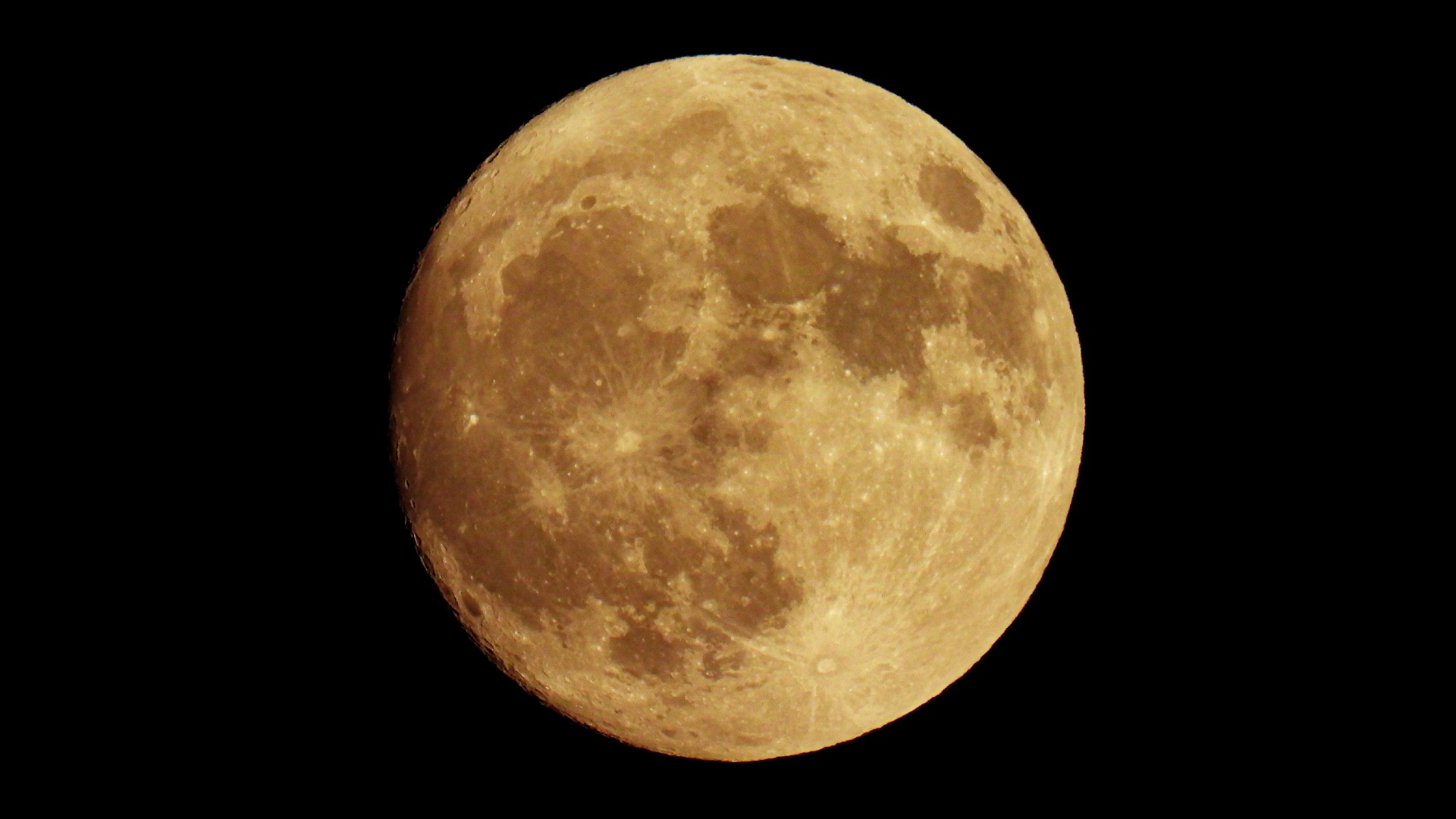Watch the supermoon of August 2023 rise today with free telescope livestream (video)
The Full Sturgeon Moon is the first of two supermoons this month.
Update 3:30 p.m. ET: The Virtual Telescope Project's livestream of the Full Sturgeon Moon was canceled due to clouds.
Editor's note: If you missed the Aug. 1 full moon rising don't worry, we have rounded up some of the best photos from around the world in our Sturgeon supermoon photo story.
The first of two supermoons this month, The Full Sturgeon Moon, rises today (Aug. 1). It'll be followed by the Full Blue Moon, which rises on Aug. 30.
Both are considered supermoons because they're full moons that occur when the moon reaches its closest point to Earth (or perigee) during its 27.3-day orbit of our planet. This can result in a visible size increase of up to 14% — which is significant, but not necessarily enough to be noticeable unless you spend a lot of time observing the moon.
If conditions aren't right in your area to get outside and watch the Full Sturgeon Moon this year, you're in luck: The Virtual Telescope Project based outside of Rome, Italy will be hosting a free telescope livestream of August's first full moon starting at 2:40 p.m. ET (1840 GMT). Watch it live here at Space.com courtesy of astronomer Gianluca Masi of the Virtual Telescope Project.
Related: August full moon guide 2023: The Full Sturgeon Moon makes a close pass to Saturn


Looking for a telescope to see the moon up close? We recommend the Celestron Astro Fi 102 as the top pick in our best beginner's telescope guide.
As seen from New York City, the Full Sturgeon Moon will rise close to 9:30 p.m. EDT (0130 GMT on Aug. 2), and will set at 5:11 a.m. EDT (0911 GMT) on Wednesday, Aug. 2, according to In the Sky.
Breaking space news, the latest updates on rocket launches, skywatching events and more!
Because this event takes place while the moon is so close to Earth, skywatchers can also expect up to a 30% brightening of the visible face of the moon. During the Full Sturgeon Moon, the moon will be located 222,158 miles (357,530 km) from Earth.
On average, the moon sits around 238,000 miles (382,900 km) away. But because the moon's orbit is elliptical, or oval-shaped, the distance between our planet and its companion changes throughout the moon's trajectory. The exact moment of perigee, at which point the moon will be closest to Earth, happens on Wednesday (Aug. 2) at 1:52 a.m. EDT (0552 GMT).
If you are hoping to catch a look at any of the three upcoming supermoons, starting with the Full Sturgeon Moon, our guides to the best telescopes and binoculars are a great place to start.
And if you're looking to snap photos of the moon and the night sky in general, check out our guide on how to photograph the moon, as well as our best cameras for astrophotography and best lenses for astrophotography.
Editor's Note: If you snap an image of the Full Sturgeon Moon and would like to share it with Space.com's readers, send your photo(s), comments, and your name and location to spacephotos@space.com.
Join our Space Forums to keep talking space on the latest missions, night sky and more! And if you have a news tip, correction or comment, let us know at: community@space.com.

Brett is curious about emerging aerospace technologies, alternative launch concepts, military space developments and uncrewed aircraft systems. Brett's work has appeared on Scientific American, The War Zone, Popular Science, the History Channel, Science Discovery and more. Brett has English degrees from Clemson University and the University of North Carolina at Charlotte. In his free time, Brett enjoys skywatching throughout the dark skies of the Appalachian mountains.
